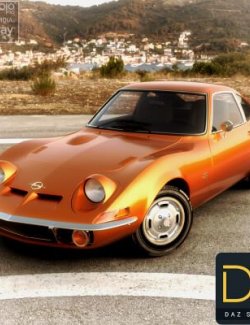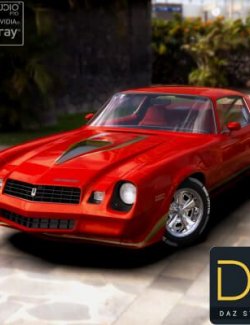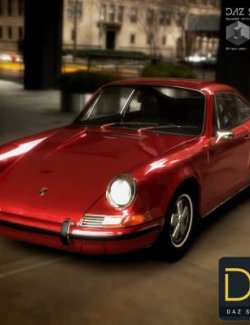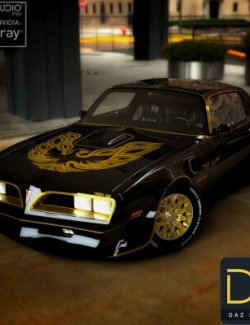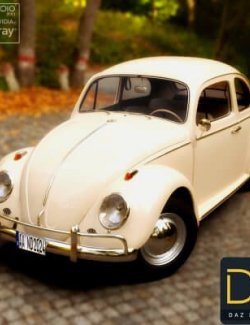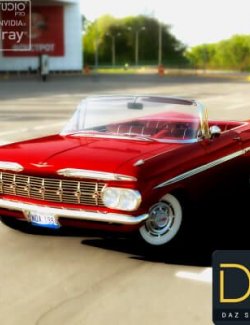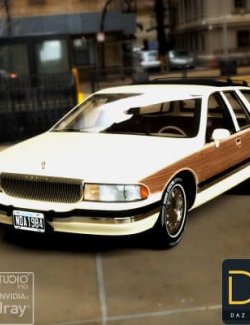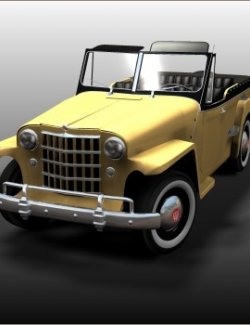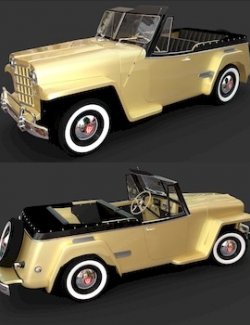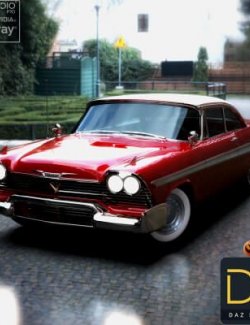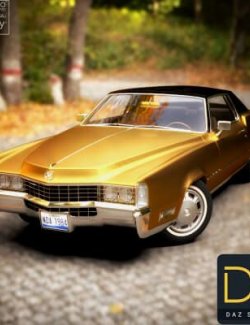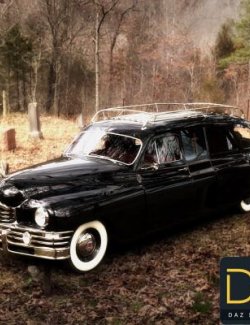Click on image to see gallery.
Warning! Some images may contain nudity and are not suitable for all viewers.
Ford Pinto for Daz Studio preview image 0Ford Pinto for Daz Studio preview image 1Ford Pinto for Daz Studio preview image 2Ford Pinto for Daz Studio preview image 3Ford Pinto for Daz Studio preview image 4The Ford Pinto is a subcompact car that was manufactured and marketed by Ford Motor Company in North America from 1971 until 1980. The Pinto was the first subcompact vehicle produced by Ford in North America.
The Pinto was marketed in three body styles throughout its production: a two-door fastback sedan with a trunk, a three-door hatchback, and a two-door station wagon. Mercury offered rebadged versions of the Pinto as the Mercury Bobcat from 1975 until 1980 (1974 1980 in Canada). Over three million Pintos were produced over its ten-year production run, outproducing the combined totals of its domestic rivals, the Chevrolet Vega and the AMC Gremlin. The Pinto and Mercury Bobcat were produced at Edison Assembly in Edison, New Jersey, St. Thomas Assembly in Southwold, Ontario, and San Jose Assembly in Milpitas, California.
Since the 1970s, the safety reputation of the Pinto has generated controversy. Its fuel-tank design attracted both media and government scrutiny after several deadly fires occurred when the tanks ruptured in rear-end collisions. A subsequent analysis of the overall safety of the Pinto suggested it was comparable to other 1970s subcompact cars. The safety issues surrounding the Pinto and the subsequent response by Ford have been cited widely as business ethics and tort reform case studies.
American automakers had first countered imports such as the Volkswagen Beetle with compact cars including the Ford Falcon, Ford Maverick, Chevrolet Corvair and Plymouth Valiant, although these cars featured six-cylinder engines and comprised a larger vehicle class. As the popularity of smaller Japanese imports Toyota Corolla and Datsun 510 increased throughout the 1960s, Ford North America responded by introducing the Cortina from Ford of Europe as a captive import. American automakers introduced their subcompacts, led by the AMC Gremlin that arrived six months before the Pinto, and the Chevrolet Vega, introduced the day before the Pinto.
Named for the pony, the Pinto was introduced on September 11, 1970. It was a completely new platform, but utilized a powertrain from the European-specification Escort. Ford Chairman Henry Ford II himself purchased a 1971 Runabout (hatchback) to use as one of his personal cars
Initial planning for the Pinto began in the summer of 1967, was recommended by Ford's Product Planning Committee in December 1968, and was approved by Ford's board of directors in January 1969. Ford President Lee Iacocca wanted a 1971 model that weighed under 2,000 lb (907 kg) and that would be priced at less than US$2,000 ($15,960 in 2022 dollars). The Pinto product development, from conception through delivery, was completed in 25 months when the automotive industry average was 43 months, the shortest production planning schedule in automotive history at the time. Some development processes usually conducted sequentially were conducted in parallel. Machine tooling overlapped with product development, which froze the basic design. Decisions that threatened the schedule were discouraged;the attitude of Ford management was to develop the Pinto as quickly as possible. Iacocca ordered a rush project to build the car, and the Pinto became known internally as "Lee's car".The Pinto's bodywork was styled by Robert Eidschun.
Offered with an inline-four engine and bucket seats the Pinto's mechanical design was conventional, with unibody construction, a longitudinally mounted engine in front driving the rear wheels through either a manual or automatic transmission and live axle rear end. The suspension was by unequal-length control arms with front coil springs while the live rear axle was mounted on leaf springs. The rack and pinion steering optionally had power assist, as did the brakes.
The Ford Pinto went on sale on September 11, 1970, in one body style, a fastback sedan with an enclosed trunk. A hatchback became available on February 20, 1971, debuting at the Chicago Auto Show. In 1971, the Pinto brochure came with a paper cutout Pinto that one could fold to make a 3D model. Marketed as the Runabout, the hatchback went on sale five days later, priced at $2,062 ($14,900 in 2022 dollars ). The hatch itself featured exposed chrome hinges for the liftgate and five decorative chrome strips, sprung scissor struts to assist in opening the hatch, a rear window approximately as large as the sedan's, and a fold-down seat a feature which became simultaneously an option on the sedan. The hatchback model matched the sedan in all other dimensions and offered 38.1 cubic feet (1.08 m3) of cargo space with its seat folded. By 1972, Ford redesigned the hatch itself, with the glass portion of the hatch enlarged to almost the entire size of the hatch itself, ultimately to be supplemented for 1977 1980 with an optional rear hatch that was entirely glass.
On October 30, 1970, less than two months after introduction, 26,000 Pintos were recalled to address a possible problem with the accelerator sticking on once engaged at more than halfway.On March 29, 1971, Ford recalled all 220,000 Pintos manufactured before March 19, 1971, to address a problem with fuel vapors in the engine air filter possibly igniting by a backfire through the carburetor.
On February 24, 1972, the Pinto station wagon debuted with an overall length of 172.7 in (4,390 mm) and 60.5 cubic feet (1.71 m3) of cargo volume.The first 2-door Ford station wagon since the 1965 Falcon, the Pinto wagon was equipped with flip-open rear quarter windows. Along with front disk brakes, the 2.0L engine was standard equipment. A Pinto Squire wagon featured simulated woodgrain trim similar to the full-size Country Squire.
Also in February 1972, the Sprint Decor Group was made available for the Pinto for one model year only. The Sprint Decor Group included white exterior paint with blue accent paint and red pin-striping, a blacked-out grille, color-keyed wheels with bright trim rings and hubcaps, whitewall tires, and color-keyed dual sport mirrors. The interior included red, white, and blue cloth and vinyl bucket seats, full carpeting as well as a deluxe steering wheel. The Sprint Decor Group was offered simultaneously on the Maverick and Mustang.
For the 1973 model year, more appearance options were offered. There was a new Sport Accent Group offered in white exterior paint with a choice of two-tone orange or avocado accent paint, matching vinyl roof, and a deluxe interior with wood-tone trim. There was also a new Luxury Decor Group with bright exterior dress-up moldings, black bumper rub strips, and a deluxe interior with wood-tone trim. New slotted forged aluminum wheels were offered.
The Ford Pinto was produced from 1975 through 1980 with over 3 million examples built. 484,512 of those were built in 1973, marking the car's second-best sales year. These were the smallest American Ford vehicles since 1907 and were the first Ford subcompact vehicle produced. Bodystyles included a two-door fastback sedan with a trunk, a three-door hatchback, and a two-door station wagon.
Ford introduced the Pinto on September 11th of 1970 under the tagline, 'The Little Carefree Car.' These low-priced vehicles were originally offered solely as a two-door sedan, with the base model selling at $1,850. A hatchback Runabout followed in 1971, priced at $2,060.
For the 1973 model year, appearance options were added to the pinto along with a new Sport Accent Group. This new option package was offered in white exterior paint with a choice of two-tone orange or avocado accent paint, a matching vinyl roof, and a deluxe interior with wood-tone trim. Additionally, a luxury Decor Group added black bumper rub stripes, a deluxe interior with wood-tone trim, and dress-up moldings.
Unfortunately suffering the reputation of being a cheap economy car, the Pinto has still made its way into popular culture.
Introduced in 1971 as competition for the new import and domestic subcompacts, the Pinto was meant to be so simple a vehicle that Ford could produce this vehicle with little time and money.
Manufactured by the Ford Motor Company, the Ford Pinto was introduced in 1971. The twin of the Pinto was the Mercury Bobcat that was introduced in Canada in 1974, and in 1975 to the U.S. The Chevrolet Vega and AMC Gremlin were also introduced at the same time.
The most successful of the U.S. designs, the Pinto was the base model for the newly designed Mustang II.
Built and produced in St. Thomas, Ontario, Canada, and California, the Pinto began in 1968 under Lee Iacocca, Ford executive.
The body styles of the pinto were a 2-door coupe, a two-door station wagon, a three-door hatchback, and Ford Pinto Cruising Wagon. A small conversion wagon that came with round 'bubble windows' in the side panels was very popular during the late 1970's.
Originally introduced as a two-door sedan in 1971, the three-door Runabout was added mid-season to the line. Standard equipment for the vehicle was a high back, slimline buckets seats, a totally vinyl upholstery, ventless door windows, interior dome light and much more.
Receiving the same standard equipment, the 3 door Runabout also received a fold-down rear seat with load floor color-keyed carpeting and passenger compartment color-keyed carpeting.
The engine was a British built 1600cc inline OHV four-cylinder with a four-speed transmission.
A conventional design, complete with unibody construction that had an engine mounted in the front driving the rear wheels through either a live axle rear end, an automatic or a manual transmission.
The suspension was a very unequal-length A-arms that held coil springs that were suspended on leaf springs with a live axle on the rear.
With an optional power assist attached to the rack and pinion steering, the styling resembled the Ford Mackerick. With very low seating that nearly reached the floor, the grille and tail light themes resembled the Maverick.
In 1972 the main updates to the Runabout was the addition of a larger rear window. The new two door wagon was also introduced this year.
The exterior of the Pinto remained the same except for the redesign of the front bumper guards and rear bumpers. Now nearly one and a half inches longer in length, the standard and optional equipment remained the same from 72 to 73.
Federally mandated safety requirement were enforced in 1974, mainly in the area of massive safety bumpers. The bumper was plain on the base trim models, though it came with rubber faced and vertical guards.
In 1975 a 170 cubic inch OHV V6 engine was available as the optional engine only in the station wagon while the 2.3 was now standard equipment. The 1.6 L Kent engine was praised by Road & Track.
The original engine had a British-constructed 1.6 L OHV I4 along with a German made 2.0 L SOHC I4. The 1.6 L was dropped in 1974k and the new 2.3 L engine became available. In 1975, the 2.8 L V6 engine was made available.
The major fault of this vehicle was the alleged design of the fuel tank that hinted in the result of deadly fires and explosions when rear end collisions occurred.
The lack of a true rear bumper, as well as any major structure between the rear panel and the tank, was the cause of the fear of the tank being thrust during a collision by the numerous bolts that could puncture the tank.
Federally mandated safety requirement were enforced in 1974, mainly in the area of massive safety bumpers. The bumper was plain on the base trim models, though it came with rubber faced and vertical guards.
The door could also potentially jam during the hazard of an accident made the vehicle a potential deathtrap.
Refusing to pay the minimal expense of a redesign, Ford made the decision to pay the possible lawsuits.
The supposed characterization of Ford's gross disregard for human lives in favor of profit let to large lawsuits, criminal charges and a expensive recall of all affected Pintos.
Gaining a reputation for manufacturing 'the barbecue that seats four', Ford lost several million dollars during this scandal.
Forbes Magazine included Pinto on its list of the worst vehicles of all time due to the alleged engineering, safety and reliability issues.
At one time, the Pinto was referred to as 'the car nobody ever loved, but everybody bought'.
In 1976 the appearance of the Pinto was updated to include a new argent painted egg-crate grille with inset square parking lamps. It also had updated bright headlight bezels as well as a bright front hood lip molding. Interior changes included a choice of either all vinyl or sporty cloth.
To attract younger drivers the Pinto Stallion was introduced in 1976. Now an option on both the sedan and hatchback, the V6 was now offered.
In 1977 a new soft nose with sloping hood and flexible fender extensions were offered and revised the appearance of the Pinto. Now new larger rear taillights, an optional all-glass third door and extruded anodized aluminum bumpers were featured.
The Cruising wagon which was styled along the lines of the Econoline Cruising van was available in 1977. In 1979, the Pinto had a new look that included rectangular headlamps, a new sloping hood and fenders as well as a slat style grille. The ESS option was available in 1979 for sedans and Runabouts with both black grille and exterior accents. In 1980, the final year for the Pinto the V6 was dropped, which made the 2.3 OHC 4 cylinder the only engine available. Both the ESS and Cruising wagon were still available.
In 1981 the Pinto was replaced by the Ford Escort.
The Pinto faced competition with the Toyota Corolla, Datsun B210 and several other smaller Japanese vehicles. The Pinto was a poor rival when compared to these more dependable, durable vehicles. The Pinto Pangra was sporting vehicle that was released in limited numbers by Hungtington Ford in Arcadia, California. Nearly 200 models were sold during 1973 and cost approximately $5,000. The Pangra was fitted with a stock 2 liter engine that was fitted with an AK Miller turbocharger, and had a newly redesigned fiberglass nose with pop-up headlights.
Mesh data
vertices: 155.553
tri ngulos: 198.526
Where to buy: RenderHub
Publish date: March 19, 2024

